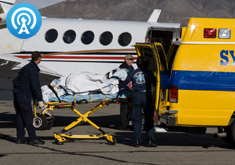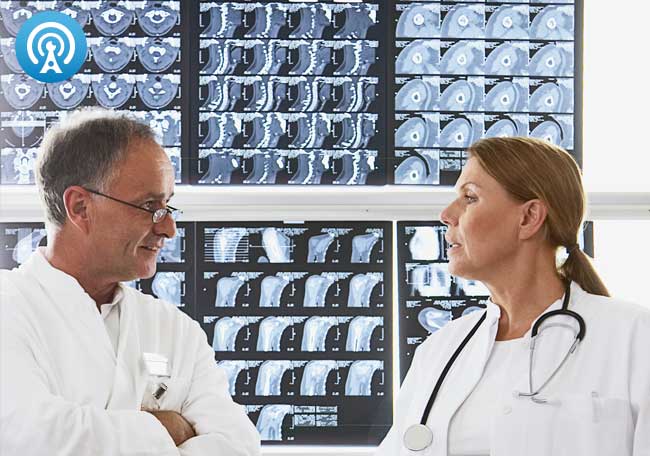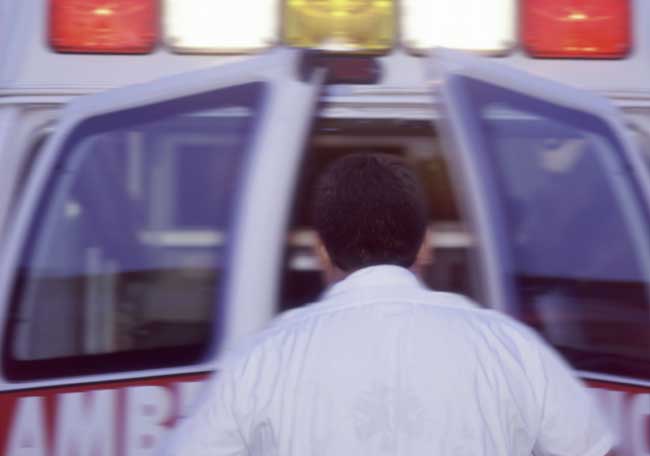Emergencias médicas en vuelos comerciales

1. Goodwin T. In-flight medical emergencies: an overview. BMJ 2000; 321: 1338-41.
2. Peterson DC, Martin-Gill C, Guyette FX, et al. Outcomes of medical emergencies on commercial airline flights. N Engl J Med 2013; 368: 2075-83.
3. Federal Aviation Administration (FAA), Department of Transportation. Emergency medical equipment: final rule. Fed Regist 2001; 66: 19028-46.
4. Aerospace Medical Association, Air Transport Medicine Committee. Medical emergencies: managing in-flight medical events. Aerospace Medical Association, 2013.
5. Gendreau MA, DeJohn C. Responding to medical events during commercial airline flights. N Engl J Med 2002; 346: 1067-73.
6. International Air Transport Association. Medical manual. 7th ed. Montreal: IATA, 2006.
7. Baltsezak S. Clinic in the air? A retrospective study of medical emergency calls from a major international airline. J Travel Med 2008; 15: 391-4.
8. Advisory circular: emergency medical
equipment training. AC No. 121-34B. Washington, DC: Federal Aviation Administration, 2006 (http://www.faa.gov/documentLibrary/media/Advisory_Circular/AC121-34B .pdf).
9. Aviation Medical Assistance Act of 1998, Pub L. No. 105-170. Washington, DC: National Archives and Records Administration, 1998.
10. Kruger v. United Airlines, Inc., 481 F.Supp.2d 1005, 2007.
11. 49 U.S. Code § 44701, 2012. 12. Health Insurance Portability and Accountability Act of 1996 (HIPAA), Pub. L. DC: National Archives and Records Administration, 1996.
13. Cummins RO, Schubach JA. Frequency and types of medical emergencies among commercial air travelers. JAMA 1989; 261: 1295-9.
14. Rea TD, Fahrenbruch C, Culley L, et al. CPR with chest compression alone or with rescue breathing. N Engl J Med 2010; 363: 423-33.
15. Svensson L, Bohm K, Castrèn M, et al. Compression-only CPR or standard CPR in out-of-hospital cardiac arrest. N Engl J Med 2010; 363: 434-42.
16. Caffrey SL, Willoughby PJ, Pepe PE, Becker LB. Public use of automated external defibrillators. N Engl J Med 2002; 347: 1242-7.
17. Hallstrom AP, Ornato JP, Weisfeldt M, et al. Public-access defibrillation and survival after out-of-hospital cardiac arrest. N Engl J Med 2004; 351: 637-46.
18. Kitamura T, Iwami T, Kawamura T, Nagao K, Tanaka H, Hiraide A. Nationwide public-access defibrillation in Japan. N Engl J Med 2010; 362: 994-1004.
19. Larsen MP, Eisenberg MS, Cummins RO, Hallstrom AP. Predicting survival from out-of-hospital cardiac arrest: a graphic model. Ann Emerg Med 1993; 22: 1652-8.
20. Mosesso VN Jr, Davis EA, Auble TE, Paris PM, Yealy DM. Use of automated external defibrillators by police officers for treatment of out-of-hospital cardiac arrest. Ann Emerg Med 1998; 32: 200-7.
21. Morrison LJ, Kierzek G, Diekema DS, et al. 2010 American Heart Association guidelines for cardiopulmonary resuscitation and emergency cardiovascular care science, part 3: ethics. Circulation 2010; 122: Suppl 3: S665-S675.
22. Kurz MC, Mattu A, Brady WJ. Acute
coronary syndromes. In: Marx J, Hockberger R, Walls R, eds. Rosen’s emergency medicine: concepts and clinical practice. 8th ed. St. Louis: Mosby, 2013.
23. O’Connor RE, Brady W, Brooks SC 2010 American Heart Association guidelines for cardiopulmonary resuscitation and emergency cardiovascular care. Circulation 2010; 122: Suppl 3: S787-S817.
24. Aerospace Medical Association, Aviation Safety Committee, Civil Aviation Subcommittee. Cabin cruising altitudes for regular transport aircraft. Aviat Space Environ Med 2008; 79: 433-9.
25. Cottrell JJ. Altitude exposures during aircraft flight: flying higher. Chest 1988; 93: 81-4.
26. Humphreys S, Deyermond R, Bali I, Stevenson M, Fee JP. The effect of high altitude commercial air travel on oxygn saturation. Anaesthesia 2005; 60: 458-60.
27. Jauch EC, Saver JL, Adams HP Jr, et al. Guidelines for the early management of patients with acute ischemic stroke: a guideline for healthcare professionals from the American Heart Association/ American Stroke Association. Stroke 2013;44: 870-947.
28. Aerospace Medical Association Medical Guidelines Task Force. Medical guidelines for airline travel, 2nd ed. Aviat Space Environ Med 2003; 74: Suppl: A1-A19.
29. Silverman D, Gendreau M. Medical issues associated with commercial flights. Lancet 2009; 373: 2067-77.
30. Huff JS, Decker WW, Quinn JV, et al. Clinical policy: critical issues in the evaluation and management of adult patients presenting to the emergency department with syncope. Ann Emerg Med 2007; 49: 431-44.
31. Oh JH, Hanusa BH, Kapoor WN. Do symptoms predict cardiac arrhythmias and mortality in patients with syncope? Arch Intern Med 1999; 159: 375-80.
32. Newman DG. An analysis of in-flight passenger injuries and medical conditions: 1 January 1975 to 31 March 2006. Aviation Research and Analysis Report B2006/0171. Canberra: Australian Transport Safety Bureau, 2006.
33. Baker SP, Brady JE, Shanahan DF, Li G. Aviation-related injury morbidity and mortality: data from U.S. health inform information systems. Aviat Space Environ Med 2009; 80: 1001-5.
34. Guidelines for field triage of injured patients: recommendations of the National Expert Panel on Field Triage, 2011. MMWR Recomm Rep 2012; 61(RR-1): 1-20.
35. Coker RK, Shiner RJ, Partridge MR. Is air travel safe for those with lung disease? Eur Respir J 2007; 30: 1057-63.
36. Roubinian N, Elliott CG, Barnett CF, et al. Effects of commercial air travel on patients with pulmonary hypertension air travel and pulmonary hypertension. Chest 2012; 142: 885-92.
37. British Thoracic Society Standards of Care Committee. Managing passengers with respiratory disease planning air
travel: British Thoracic Society recommendations. Thorax 2002; 57: 289-304.
38. Hu X, Cowl CT, Baqir M, Ryu JH. Air travel and pneumothorax. Chest 2014; 145: 688-94.
39. Madan K, Vishwanath G, Singh N. Inflight spontaneous pneumothorax: congenital cystic adenomatoid malformation of the lung. Respiration 2012; 83: 554-8.
40. Bunch A, Duchateau FX, Verner L, Truwit J, O’Connor R, Brady W. Commercial air travel after pneumothorax: a review of the literature. Air Med J 2013; 32:268-74.
41. Han Z, To GN, Fu SC, Chao CY, Weng W, Huang Q. Effect of human movement on airborne disease transmission in an airplane cabin: study using numerical modeling and quantitative risk analysis. BMC Infect Dis 2014; 14: 434.
42. Gupta JK, Lin CH, Chen Q. Risk assessment of airborne infectious Diseases in aircraft cabins. Indoor Air 2012; 22:388-95.
43. 42 C.F.R. § 70.4. Report of disease, 2014.
44. Matsumoto K, Goebert D. In-flight psychiatric emergencies. Aviat Space Environ Med 2001; 72: 919-23.
45. DeHart RL. Health issues of air travel. Annu Rev Public Health 2003; 24: 133-51.
Comentarios
Para ver los comentarios de sus colegas o para expresar su opinión debe ingresar con su cuenta de IntraMed.









